Input interpretation

ketene
Chemical names and formulas
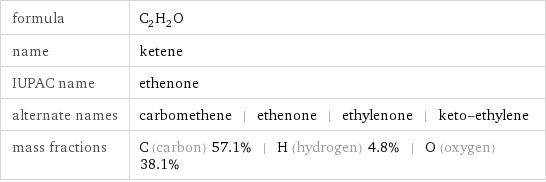
formula | C_2H_2O name | ketene IUPAC name | ethenone alternate names | carbomethene | ethenone | ethylenone | keto-ethylene mass fractions | C (carbon) 57.1% | H (hydrogen) 4.8% | O (oxygen) 38.1%
Lewis structure
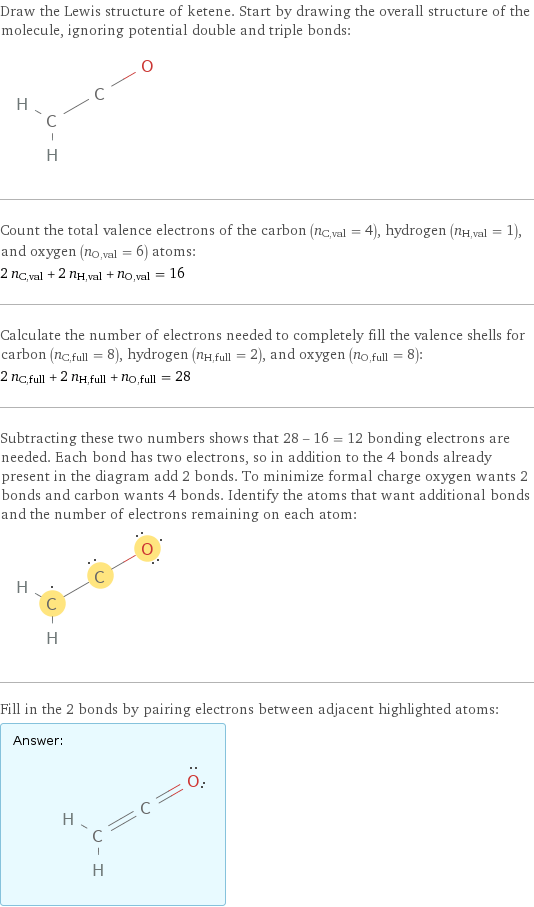
Draw the Lewis structure of ketene. Start by drawing the overall structure of the molecule, ignoring potential double and triple bonds: Count the total valence electrons of the carbon (n_C, val = 4), hydrogen (n_H, val = 1), and oxygen (n_O, val = 6) atoms: 2 n_C, val + 2 n_H, val + n_O, val = 16 Calculate the number of electrons needed to completely fill the valence shells for carbon (n_C, full = 8), hydrogen (n_H, full = 2), and oxygen (n_O, full = 8): 2 n_C, full + 2 n_H, full + n_O, full = 28 Subtracting these two numbers shows that 28 - 16 = 12 bonding electrons are needed. Each bond has two electrons, so in addition to the 4 bonds already present in the diagram add 2 bonds. To minimize formal charge oxygen wants 2 bonds and carbon wants 4 bonds. Identify the atoms that want additional bonds and the number of electrons remaining on each atom: Fill in the 2 bonds by pairing electrons between adjacent highlighted atoms: Answer: | |
3D structure

3D structure
Basic properties

molar mass | 42.037 g/mol phase | gas (at STP) melting point | -134.1 °C boiling point | -56 °C density | 0.65 g/cm^3 (at -60 °C) solubility in water | very soluble
Units

Gas properties (at STP)
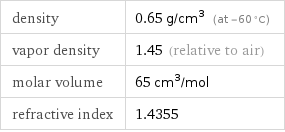
density | 0.65 g/cm^3 (at -60 °C) vapor density | 1.45 (relative to air) molar volume | 65 cm^3/mol refractive index | 1.4355
Units

Thermodynamic properties
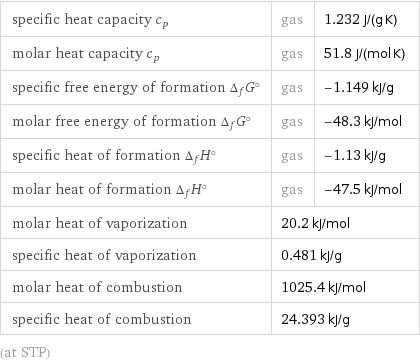
specific heat capacity c_p | gas | 1.232 J/(g K) molar heat capacity c_p | gas | 51.8 J/(mol K) specific free energy of formation Δ_fG° | gas | -1.149 kJ/g molar free energy of formation Δ_fG° | gas | -48.3 kJ/mol specific heat of formation Δ_fH° | gas | -1.13 kJ/g molar heat of formation Δ_fH° | gas | -47.5 kJ/mol molar heat of vaporization | 20.2 kJ/mol | specific heat of vaporization | 0.481 kJ/g | molar heat of combustion | 1025.4 kJ/mol | specific heat of combustion | 24.393 kJ/g | (at STP)
Chemical identifiers
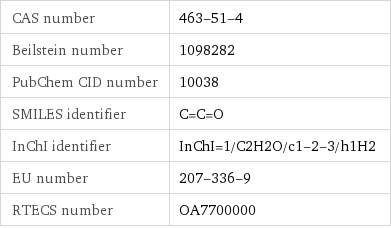
CAS number | 463-51-4 Beilstein number | 1098282 PubChem CID number | 10038 SMILES identifier | C=C=O InChI identifier | InChI=1/C2H2O/c1-2-3/h1H2 EU number | 207-336-9 RTECS number | OA7700000
NFPA label

NFPA label

NFPA health rating | 3
Safety properties

flash point | -107 °C
Toxicity properties

short-term exposure limit | 3 mg/m^3

long-term exposure limit | 0.9 mg/m^3 (over 8 hours) RTECS classes | other